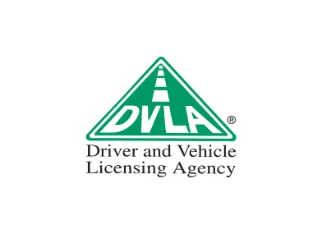Number plates serve as a unique vehicle identifier, enabling law enforcement, traffic management, and various legal processes. However, displaying a number plate comes with a web of rules and regulations in the United Kingdom (UK) to ensure road safety, effective enforcement, and standardised identification.
We crafted this article for the average UK driver to ensure legal compliance and answer any questions you may have. In this guide, we’ll dive into the significance of number plates, the legal framework governing their display, and the importance of adhering to these regulations for the greater good.
Significance of Number Plates for Vehicle Identification
Number plates are like a vehicle’s ID card — they provide essential information that helps authorities track and identify vehicles in various scenarios.
For monitoring traffic flow, identifying stolen vehicles, investigating accidents, or managing congestion, number plates are the backbone of vehicle identification. Without them, managing our roads efficiently and maintaining order would be an uphill battle.
Not only do number plates aid law enforcement and traffic systems, but they also contribute to public safety by ensuring drivers can be held accountable for their actions on the road. With standardised number plates, authorities can deliver proper sanctions to those breaking the law.
Legal Framework Governing Number Plate Display
In the UK, the Driver and Vehicle Licensing Agency (DVLA) governs the comprehensive set of regulations that manages the display of number plates. The DVLA designed these regulations to standardise number plates for easy identification, ensure road safety, and facilitate effective enforcement.
Adhering to these rules is not just a matter of compliance — it’s a responsibility that every vehicle owner must undertake to contribute to a safer road environment.

Importance of Adhering to Regulations for Road Safety and Enforcement
Correctly displayed number plates enhance road safety by identifying vehicles involved in incidents or violations quickly and accurately. Additionally, adhering to regulations facilitates automatic number plate recognition (ANPR) systems, which automatically read number plates to identify vehicles of interest. Thus, following DVLA regulations can contribute to a safer and more secure road network.
Essential Requirements
Understanding the country’s essential requirements for number plates is an excellent first step. Here’s what you need to know about the general number plate requirements.
Materials and Construction
According to DVLA specifications, number plate manufacturers must fabricate number plates from reflective materials. Reflective plate materials ensure that number plates remain visible regardless of ambient light, allowing other road users and law enforcement agencies to identify vehicles accurately.
However, it’s not just about visibility. Number plates also need to be resilient. They face relentless exposure to the elements, including rain, snow, mud, and debris kicked up by other vehicles. Additionally, they must withstand the physical stresses of everyday driving, including vibrations and occasional impacts.
A plate that has faded, peeled, or deteriorated due to poor materials and construction can become a liability on the road. This quality also makes it harder for the authorities and drivers to identify vehicles.
Size and Dimensions
Uniformity in size and dimensions is a fundamental aspect of number plate regulations. This standardisation serves two critical purposes: ease of identification and readability.
Characters on number plates must adhere to specific dimensions, including the 79mm height and 50mm width requisite. This consistency ensures that characters are easily distinguishable and recognisable, even from a distance.
Similarly, there are guidelines for the width of characters and spacing between them, which must be 11mm. These rules ensure that characters don’t blend or become illegible. If characters are not aligned correctly or the spacing between them is inconsistent, it can lead to confusion and misinterpretation.
Visibility and Illumination
Adequate nighttime visibility is just as important as daytime recognition. That is why regulations stipulate the proper illumination of number plates when it’s dark. This lighting is typically achieved through dedicated lighting fixtures, such as white rear-facing lights on the vehicle.
Nighttime illumination is essential as it allows other road users to identify vehicles at night, which is vital for overall road safety. It also assists law enforcement agencies in accurately reading number plates during nighttime traffic stops or surveillance operations.
It’s crucial to emphasise that any form of reflective or tinted coverings that impedes visibility is strictly prohibited. Such modifications lead to legal violations and increase the risk of accidents.
Character and Formatting Guidelines
The character and formatting guidelines that the UK’s Driver and Vehicle Licensing Agency (DVLA) prescribes ensure a consistent visual language that transcends aesthetic preferences, focusing on legibility, clarity, and uniformity.
Font and Styling
The ‘Charles Wright’ or ‘Block’ font isn’t just a random choice; it’s a calculated decision to optimise recognition. Uniformity in font and styling is the bedrock of number plate regulations. The DVLA chose the ‘Charles Wright’ typeface because it allows for easy recognition.
The regulation stipulating that characters must be black on a specific coloured background might seem arbitrary, but it’s grounded in practicality. High contrast is essential for visibility, especially in challenging lighting conditions. Front plates must have white backgrounds, and the rear plates must have yellow backgrounds, free of patterns or other designs.
Non-Alphanumeric Characters
The prohibition of decorative elements or emblems on number plates ensures that nothing impedes the swift identification of the vehicle. While personalisation is allowed within specific formatting and content rules, these rules are in place to guarantee that personalisation doesn’t compromise the plate’s primary function: accurate identification.
Number Plate Content Regulations
The composition of a number plate is regulated to maintain a sense of order and to uphold accuracy and accountability in vehicle identification.
Registration Mark
The registration mark, often referred to as the ‘VRM’ (Vehicle Registration Mark), is the core element of a number plate. It’s more than just a combination of letters and numbers — it’s a unique identifier that distinguishes one vehicle from another.
The registration mark rules ensure that vehicles can be identified accurately and efficiently by law enforcement agencies, surveillance systems, and other road users.
Supplier Information
Regulations mandate that drivers display the manufacturer’s details and the British Standard mark. These marks carry significant weight, signifying that the plates meet the required standards for materials, construction, and visibility.
The DVLA dictates that vehicles fitted before 1 September 2021 must declare ‘BS AU 145d’ on their plate, while those fitted after must display ‘BS AU 145e.’
The British Standard number symbolises adherence to rigorous industry standards. It ensures that the plates are produced using materials that reflect light effectively and are durable enough to withstand the challenges of the road.
It’s vital to obtain number plates only from registered suppliers. Plates from registered suppliers carry the assurance that they meet the stringent requirements set forth by regulatory bodies.
Replacement and Maintenance
Over time, number plates will inevitably weather the elements, endure the debris of the road, and sometimes succumb to accidental damage. This point is where the regulations regarding replacement and maintenance come into play.
Damaged or Illegible Plates
Faded characters or obscured plates can lead to confusion, misidentification, and accidents. Wear and tear from years of driving, damage from road debris or minor accidents, or non-compliance with regulations are all valid reasons to replace a number plate.
Timely replacement of these plates is essential to ensure that vehicles can be identified accurately by law enforcement agencies, ANPR systems, and fellow road users. Reasons for replacement vary, but they all share a common thread: maintaining the integrity of the identification system.
Temporary Plates
Temporary and trade plates serve specific purposes, often related to vehicles that are in transition, under repair, or being tested. While these plates might not be permanent fixtures, they are still subject to rules essential to road safety and regulatory clarity.
When using temporary plates, proper display of essential details is crucial. Just because a plate is temporary doesn’t mean it’s exempt from regulations.
Moreover, adherence to the validity duration of temporary plates is equally essential. These plates are issued for a specific period for a reason, and exceeding that duration can lead to legal consequences.
Non-Compliance Consequences
Failing to adhere to number plate regulations carries substantial repercussions. The legal system takes these violations seriously, and the consequences can include fines, penalties, and even legal action.
Non-compliance can extend its effects beyond the immediate financial impact on a vehicle’s roadworthiness certification. A car that doesn’t meet the identification standards set by the DVLA might face hurdles when obtaining or renewing its certificate.
Law Enforcement and ANPR
The introduction of Automatic Number Plate Recognition (ANPR) systems has revolutionised the landscape of law enforcement. These sophisticated systems utilise advanced technology to automatically scan and read number plates, providing law enforcement agencies with a powerful tool for identifying vehicles of interest.
These systems identify patterns, anomalies, and violations. When a non-compliant plate comes into view, it triggers alerts that can lead to further investigations or penalties.
In Conclusion
Number plates are not just about complying with the law — they contribute to a safer road environment and facilitate the smooth functioning of traffic management systems. Adhering to the number plates rules and regulations protects you and everyone around you from liabilities on the road. By staying informed and following the rules, you’re actively maintaining order and safety on our streets.
If you want to learn more about number plates, MyReg offers expert guidance and resources. If you need a legally binding and durable UK number plate, use our number plate maker now to get started.
Contact us today to enjoy fast delivery and unlimited customization.



Recent Comments